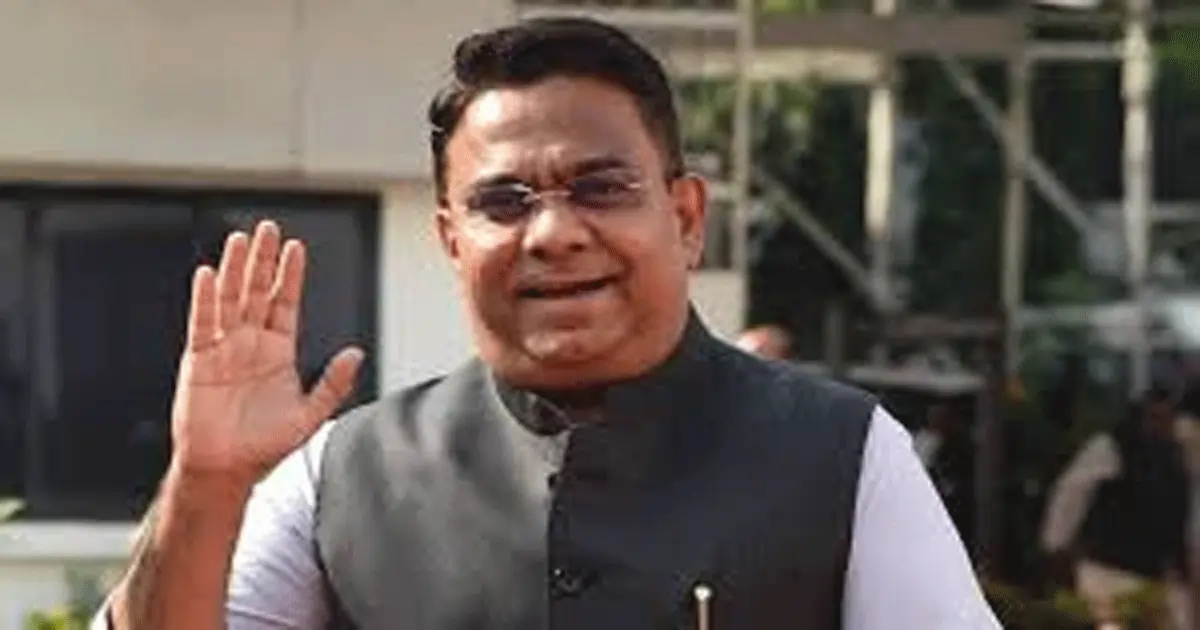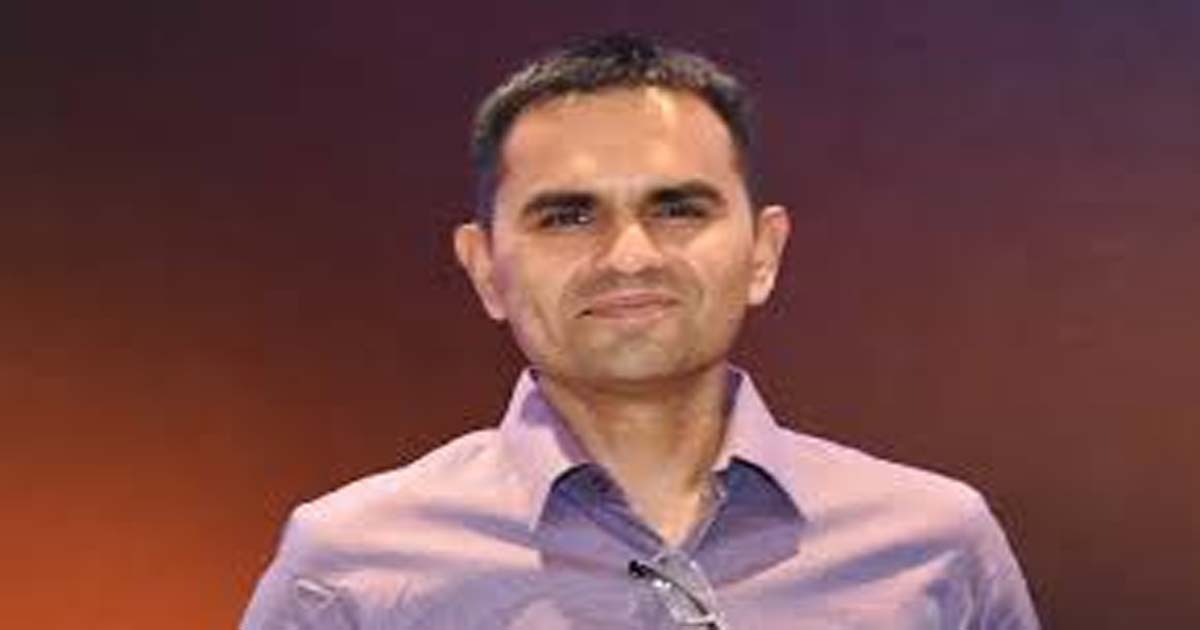Maharashtra
Conduct socio-economic impact assessment study on proposal to levy property tax on commercial units in slums, SP MLA Rais Shaikh to BMC

Mumbai: Following the BMC’s announcement of levying property tax on commercial units in slums, Samajwadi Party (SP) legislator Rais Shaikh has written to the BMC demanding that the civic body conduct the socio-economic impact assessment study by renowned institutions such as Tata Institute of Social Sciences (TISS) to understand the far-reaching ramifications on the poorest of the poor in the city. The move will have a catastrophic impact on the informal sector, with over 3 lakh people losing their livelihoods and becoming unemployed, said Shaikh.
In his letter to BMC chief Bhushan Gagrani, Shaikh stated that the BMC Budget for 2025-26 proposes to levy property tax on commercial units in slums. “This move indicates the BMC’s impending financial crisis due to the mismanagement of its finances. It will have the potential significant impact of rendering over 3 lakh people unemployed, losing their livelihoods, with the poorest of the poor being hit hardest by this decision,” said Rais Shaikh, MLA.
Shaikh has demanded that the move will have an adverse impact on the sustainability of the MSMEs which provide employment to lakhs of people. “Levying property tax on commercial units in slums will render MSMEs unsustainable, as it imposes an additional financial burden. This move will have a significant impact on the informal sector, and lakhs of people will lose their livelihoods, leading to unemployment. It is completely unjustifiable to consider commercial units in slums on par with those in malls and commercial complexes for the purpose of levying property tax,” said Shaikh.
Shaikh further stated that the rise in unemployment may lead to social disharmony and a potential increase in crime in the city. “Therefore, I demand that an socio-economic impact assessment study of the BMC’s decision to levy property tax on commercial units in slums be conducted by renowned institutions such as TISS,” Shaikh demanded.
According to the BMC, there are around 2.5 lakh slums in Mumbai. A significant number of these slum areas (at least 20%, i.e., 50,000 slums) are being used for commercial purposes such as small and large industries, shops, godowns, hotels, etc. The BMC expects to generate revenue of Rs 350 crore by levying property tax on the commercial units in slums.
Maharashtra
Maharashtra drug racket exposed from MP police station, 4 arrested

Mumbai: Police Crime Branch has claimed to have busted a drug smuggling gang in Maharashtra from Madhya Pradesh MC and arrested four accused involved in it from MP. All four are accused of running a drug racket in Maharashtra. On November 3, Imran alias Babu Khan (38), Waqas Abdul Rab Khan (30), Taqdeen Rafiq Khan (30), Kamlesh Ajay Chavan (23) from Nowpara were reported to have supplied drugs from Madhya Pradesh and sold them in Maharashtra. After this, the police arrested all four and seized more than one kg of MD, which is said to be worth more than Rs 2 crore, from their possession. This was informed by the DCP Crime Branch Amar Singh Jadhav here. He said that a big drug racket has been busted and there is a possibility of more arrests.
Maharashtra
Two youths drown in Mumbai’s Mahim creek

Mumbai: Two people jumped into the Mahim creek in Mumbai, due to which they drowned. The search for them is on. Today at around 12:20 pm, Irshad Asif Sheikh, a transgender, aged 22, residing at Lal Mati, Nargis Dutt Nagar, Bandra (West), Mumbai, and Qalander Altaf Khan, aged 20, residing at Lal Mati, Nargis Dutt Nagar, Bandra (West), were standing between a bridge in Bandra. During this, they had an argument and one jumped into the creek while the other also jumped into the water to save him.
During the argument, Irshad jumped into the water and Qalander Khan jumped after him to save him. However, both drowned in the water.
The search operation is on, so far no trace of both has been found. Teams are searching for both.
Maharashtra
Sameer Wankhede targeted in The Baddest of Bollywood; Delhi High Court orders removal of objectionable content from controversial series in defamation case

Mumbai: The Mumbai-Delhi High Court has strongly criticized Red Chillies Entertainment Shah Rukh Khan, Gauri Khan and others in the defamation case against NCB Zonal Director IRS officer Sameer Wankhede and said that artistic freedom does not mean mocking a person. After this, the High Court has ordered that the controversial footage related to Sameer Wankhede be removed from the controversial Netflix series The Bads of Bollywood. Sameer Wankhede had filed a petition in the High Court and pleaded that his character has been killed in The Bads of Bollywood and this series has been made to target him. The purpose is to humiliate and mock Sameer Wankhede. After watching some parts of this series, the High Court has ordered the removal of the controversial parts from the film.
Sameer Wankhede’s lawyer had told the court that the character portrayed in the film is a comparison to Sameer Wankhede and that this series has been created with the intention of tarnishing Wankhede’s image. The Bads of Bollywood is malicious, therefore, the above-mentioned controversial scenes and objectionable dialogues should be deleted from the series, on which the court has issued an order to delete the controversial and objectionable content and content. Earlier, while hearing Sameer Wankhede’s petition, the court had sent notices to Shah Rukh Khan’s Red Chillies, Netflix, Meta, and social media platforms and directed them to file a response. To this, Red Chillies had called the film and series a drama and made it clear that it had nothing to do with the facts. However, despite this, the Delhi High Court inquired whether a film drama does not mean that someone’s character is killed and said this, it reprimanded Shah Rukh Khan and the film company. Sameer Wankhede tried to prove through his argument that the character portrayed in the film resembles Sameer Wankhede and that this character has been portrayed in a negative way to target him and in this, an attempt has been made to make fun of Sameer Wankhede through this character, which has humiliated Wankhede, which the court has accepted and issued a directive to delete the objectionable and controversial content. This is a big success for Sameer Wankhede, while Shah Rukh Khan has suffered a huge setback.
-

 Crime3 years ago
Crime3 years agoClass 10 student jumps to death in Jaipur
-

 Maharashtra1 year ago
Maharashtra1 year agoMumbai Local Train Update: Central Railway’s New Timetable Comes Into Effect; Check Full List Of Revised Timings & Stations
-

 Maharashtra1 year ago
Maharashtra1 year agoMumbai To Go Toll-Free Tonight! Maharashtra Govt Announces Complete Toll Waiver For Light Motor Vehicles At All 5 Entry Points Of City
-

 Maharashtra1 year ago
Maharashtra1 year agoFalse photo of Imtiaz Jaleel’s rally, exposing the fooling conspiracy
-

 National News1 year ago
National News1 year agoMinistry of Railways rolls out Special Drive 4.0 with focus on digitisation, cleanliness, inclusiveness and grievance redressal
-

 Maharashtra12 months ago
Maharashtra12 months agoMaharashtra Elections 2024: Mumbai Metro & BEST Services Extended Till Midnight On Voting Day
-

 National News1 year ago
National News1 year agoJ&K: 4 Jawans Killed, 28 Injured After Bus Carrying BSF Personnel For Poll Duty Falls Into Gorge In Budgam; Terrifying Visuals Surface
-

 Crime1 year ago
Crime1 year agoBaba Siddique Murder: Mumbai Police Unable To Get Lawrence Bishnoi Custody Due To Home Ministry Order, Says Report












